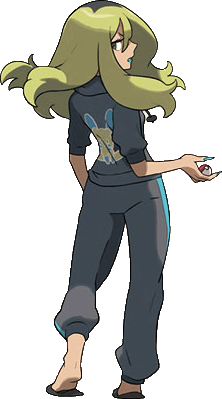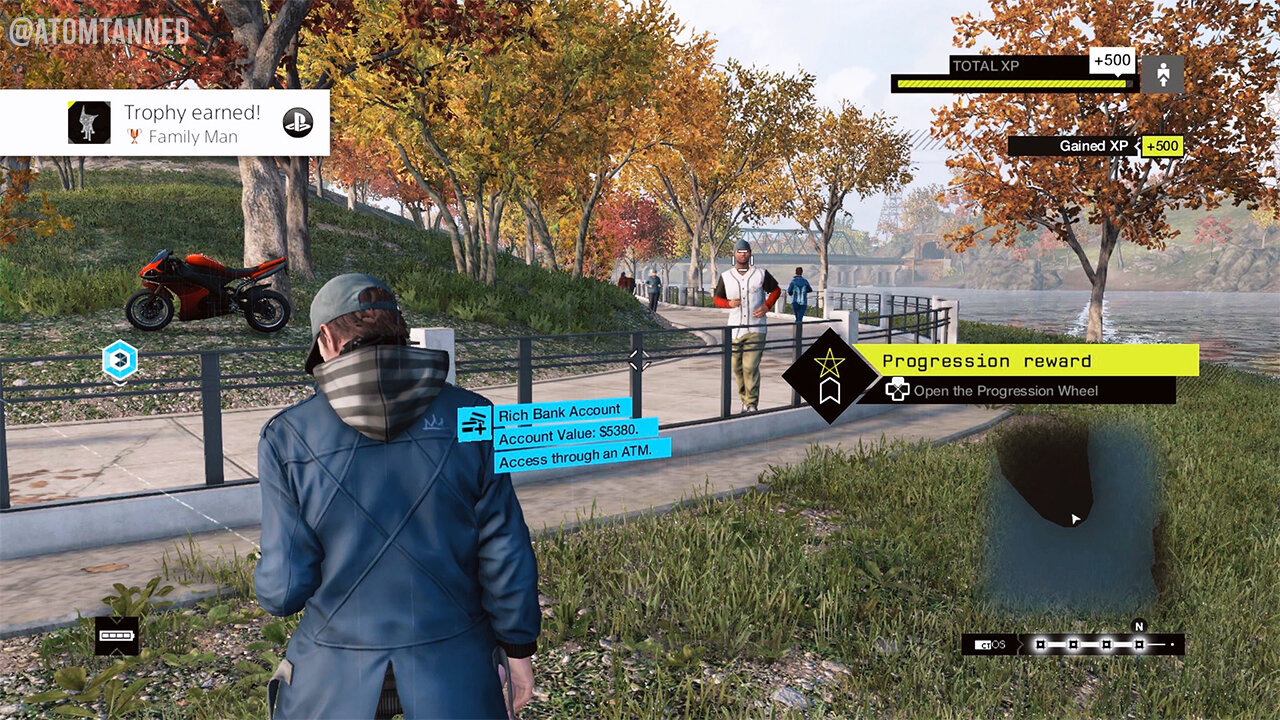REVIEW // Watch Dogs (PS4)
I picked up Watch Dogs ages ago, but for some reason never got around to playing it, which is odd because this was actually a game I was excited about. I’m originally from the Chicagoland area, so seeing my beloved city translated into an immersive digital environment is incredibly cool, and I’m glad to finally check this one off the backlog.
As a disclaimer, I’m doing my best as a recovering completionist to focus only on the main story for most games these days, as I’ll never get through the massive amount of content in the types of games I prefer to play otherwise. So while I’ve experimented with many of the different side quests and mini games available in Watch Dogs, I did not dive too deeply into this game - I am writing this review at just under 50% total completion.
Note: It’s been a while since I played a game with a future review in mind, and I ended up not taking many screenshots! I may try to go back and add more later. I wish this game had a camera mode!
As always, this review contains minor spoilers & screenshots.
STORYLINE & DESIGN
The game kicks off by introducing you to your player character, Aiden Pearce. Aiden lives in a dystopian near-future version of Chicago, a city controlled by an overly powerful operating system called ctOS. As a “hacker”, Aiden has a massive amount of power to control and influence events in the city by disrupting traffic, spying on folks using the surveillance cameras that pepper the city, even causing massive blackouts.
Aiden brooding in the shadow of the Sears Tower (no Chicago local calls it the Willis Tower, even in a video game).
When the game starts, Aiden’s niece Lena has been killed during a botched hit job on Aiden himself, and he’s out to figure out who was behind it. There’s really no slow introduction - you gain control of Aiden as he’s beating the crap out of people in the basement of May Stadium (a mashup of various sports arenas in real-life Chicago). It seems that the hit was ordered after Aiden and his partner, Damien Brenks, triggered an alarm during an electronic bank heist at a high-profile luxury hotel.
Using information gleaned from his interrogation, Aiden moves closer to finding out the truth about his niece’s death. As the game progresses, the scope of Aiden’s investigation expands to include rival street gangs, human trafficking, the company behind ctOS and the mayor of Chicago himself. For most of the game, the story seems intricately woven and complex, and it takes you through a wide variety of environments - high-end, luxurious neighborhoods like “Mad Mile”, rundown projects in The Wards, even more suburban and rural neighborhoods. But despite the engaging narrative early on, it oddly ends on a fairly simplistic and predictable note. It almost seems like the developers ran out of steam towards the end of the game.
Aiden himself is flat and frankly pretty boring - he’s the standard one-dimensional grizzled white dude out for vengeance, and never really develops beyond that. Towards the end of the game, he starts wondering if maybe running out and murdering tons of people - and putting the remainder of his family at risk for more violence - was really the best idea, but that’s as nuanced as it gets for Mr. Pearce. The supporting cast of characters, including the punk rock Canadian hacker Clara Lille and the disgraced Blume/ctOS employee T-Bone, are much more interesting and the parts of the story where you interact with them are by far the most interesting. Even the game’s villains like Iraq and his cousin Bedbug, members of the Chicago Viceroy street gang, have more depth than Aiden. I do think that Ubisoft missed an opportunity to have a more interesting protagonist, especially since the game relies more on hacking and stealth than brute force.
Aiden and the best character in the game, French Canadian hacker Clara Lille.
While the story does veer away from getting overtly preachy about technology, there’s really no way to view the surveillance and near-universal access of the Blume Corporation’s ctOS platform other than negative. Maybe some of that is influenced by playing this game in 2019, when we’ve had plenty of news stories about hacked cameras and smart assistants leaking private data into the world, but it’s pretty clearly portrayed as a Very Bad Thing to give up so much privacy for the sake of convenience. Although the game is now 6 years old, that topic feels more timely than ever.
The environment is beautifully rendered and kicked up a lot of nostalgia for me - seeing the L trains move through the Loop and getting to interact with landmarks heavily inspired by the real thing was probably one of the most enjoyable elements of the game for me. I have read that people were disappointed in the graphics based on pre-release footage, but playing on a PS4 Pro everything looks beautiful and I wasn’t at all frustrated, especially considering this is an older game that began development in 2009. I did experience minor lag and framerate drops, but they never interfered with gameplay and seemed to mostly occur as missions were loading rather than during gameplay itself.
Check out that beautiful skyline in the background! 😍
GAMEPLAY
The gameplay in Watch Dogs is excellent and does a fantastic job balancing mini game type activities with traditional stealth and FPS segments. As Aiden runs around Chicago, he can use his cell phone to “profile” other individuals with interesting results. Most NPCs don’t have any interaction available, but little tidbits of interesting information will pop up about their job, income, and hobbies. Some NPCs will be hackable, which reveals all kinds of new info or side quests. Some NPCs will reveal likely criminal activity or the location of suspicious packages, while others will allow Aiden to clean out their bank accounts.
A cool $5000 snagged from a passerby’s bank account, thanks to Aiden’s hacking skills.
The main story missions can usually be completed either by stealth or by force, and I frequently found myself using a combination of both. Aiden’s ability to hack into cameras remotely is particularly satisfying to use - I was able to take out a good portion of enemies by bouncing my viewpoint around between cameras and using my hacking skills to disable a good portion of villains without ever drawing a gun. I did typically end up killing the rest of the baddies via a silenced handgun just because it was really fun. The covering & hiding in this game function superbly well, and it was so satisfying to draw my enemy’s attention elsewhere before popping up and sniping them off via headshots one by one. Add in a small but varied arsenal of grenades and machine guns and I ended up murdering a lot of (bad) people.
Using the focus skill and a machine gun to mow down enemies is always an option as well.
The stealth options are varied as well, with Aiden gaining the ability to cause massive blackouts or jam communications between enemies. Because I liked killing the bad guys so much, I mostly used these tools while on the run from the police, who kind of function in a weird gray area in game. They do frequently pursue you and will shoot at you, run you off the road, etc. but they’re really just doing their jobs - after all, I was mowing down dozens of people, sometimes in full view of civilians - and killing them does penalize Aiden’s overall reputation.
Because there is some choice involved in the tactics and methods used to progress, and Aiden’s reputation can swing from positive (Protector & Vigilante) to negative (Anarchist & Menace). Reputation drops for killing innocent bystanders or police, and increases for stopping crimes and taking out bad guys. I tried my best to never kill anyone innocent (it just didn’t make sense to me given Aiden’s storyline) and it was extremely easy to keep my reputation maxed at positive the whole time. Aside from the likelihood of citizens calling the police on you, reputation doesn’t seem to have that much impact and I kind of wish more was done with this mechanic.
The side quests and activities are extremely varied - probably the most varied out of any Ubisoft game I’ve played to date. Starting out I was mostly limited to preventing minor criminal activity like pickpocketing, but as I progressed new types of side quests opened up, like spying on residents through their insecure routers or helping stop human trafficking. Some side quests provide audio logs that add depth to the main story and help explain or reveal information about the antagonists’ actions. Bigger sidequests include “fixer” contracts, criminal convoys and gang hideouts - these quests typically reward Aiden with skill points to help increase some of his abilities.
As I was primarily focused on the main story, I actually didn’t delve too deeply into any of these side quests but I did try to experiement with some of them. Like many Ubisoft games, there is honestly just a LOT of side activity, and many of them don’t have any impact or relation to the main story. I may go back and complete the ones that reveal additional audio logs, but things like playing poker or chess just don’t hold any appeal for me at all.
Beginning a fixer contract, which involves a high speed chase to draw police attention away from my clients.
I found the online missions found a bit annoying, despite most people seeming to view them favorably. I typically don’t utilize online play, especially in games like this, but at certain points I was forced to defend myself against rival hackers, who are actually other players who appeared in my game suddenly. It can be fun to try to hunt them down, but my annoyance came from the fact that I was occasionally forced to stop a mission or side quest to stop from being “invaded”. While you can decide not to initiate an attack or competition online, there wasn’t any way for me to stop people from initiating attacks on ME, and I ended up having to stop what I was doing in order to chase down the attacker. While this does add a little realism to the game, it sometimes happened while I was in the middle of a main story mission, and resulted in me having to backtrack significantly after chasing someone halfway across the city (no fast travel available mid-mission)! That being said, it may be appealing for some to know that the online community is still kicking after almost six years.
One other aspect that was both fun and frustrating at the same time was the driving mechanic. You’re frequently required to pursue people or try to escape in a vehicle, and I found the controls to be so frustrating! They’re described in many other reviews as cartoonish, and I would agree, but given the relative realism of the rest of the game I thought it was kind of jarring to be swerving uncontrollably into pedestrians and smashing into semi trucks with minimal impact on my vehicle. I tried whenever possibly to utilize motorcycles which were easier to control and helped the driving sequences go more smoothly for me.
RATING
While the storyline ends on somewhat of a dissatisfying note, the unique concept and environment of this game more than make up for those shortcomings. The ability to complete the story using strategies that appeal most to the player, as well as a ton of optional content and a gritty, detailed environment make Watch Dogs a game that offers a ton of replay value. Definitely worth playing.














